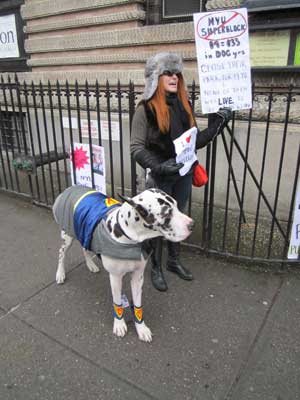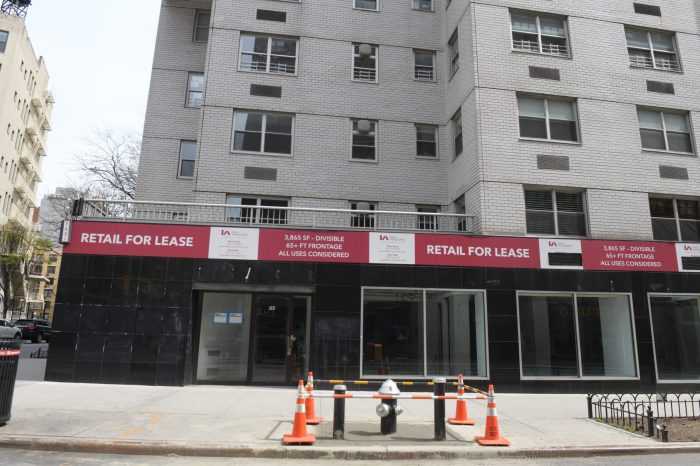BY T. SCHOEN | New Yorkers who choose to own a dog don’t have the space in their homes or even on the street for their often rambunctious beasts to exercise and enjoy themselves. That is why places like the Leroy St. Dog Run, in Hudson River Park, are crucial to the well-being of the neighborhood.
But this neighborhood nexus of dog activity, according to Lynn Pacifico, head of the Dog Owners Action Committee, is in an unsuitable condition. Overcrowding and unfinished surfaces, according to Pacifico, pose a danger to the health of the many dogs who use the space as a place to burn off their massive amounts of energy.
“The run is crowded when there are 10 dogs and their owners in there,” Pacifico said, “but there are often between 30 and 40 dogs in there at one time! It’s insane!”
Pacifico also mentioned that the park’s surface is too slippery, causing dogs to crash into the walls and fences if they’re carrying too much momentum.
The space, while big enough to accommodate a good number of dogs, does look a little too small for its purpose. The gray-and-blue pavement appears cracked and unfinished, standing out noticeably from the well-kept landscape of the rest of Hudson River Park. But this didn’t keep a fairly large, diverse crowd of dog owners from using the run, even at a mellow, quiet hour for the park. And people interviewed seemed mostly content with the dog run’s condition.
“The people here are very kind,” Ralph Perillo commented.
Another of Pacifico’s concerns about the run was the danger posed to smaller dogs by larger dogs. Yet again, dog owners interviewed, one of whom owned a small dog, actually said this was not a problem. Dog owners who know their dogs have aggressive tendencies will keep a watchful eye on them, they said. However, Pacifico does not attribute potentially violent behavior to any particular dog’s personality, but to what she called “instinctive drift,” an uncontrollable phenomenon that many dogs experience.
“People see the cuddly baby side of their dogs,” she said. “But every dog is only alive because their ancestors were good at killing small animals. The quick movements of a small animal trigger a prey drive, buried in the animal’s DNA, and the little dog becomes a target.”
With such unpredictable danger, space does become an issue — but not one, it seems, that grabs the attention of the people who use the run. In other words, other dog owners aren’t “getting her drift.”
During a recent visit, there were minor complaints from some dog owners, concerning the run. Renee Yakemchuk, who takes her dog to the park for exercise, said she would like to see some upgrades to the static, featureless run.
“I wish it had some obstacles like the ones they have in the run up on 34th St.,” she said. “I’d like to see the water running more.”
However flawed it may be, the Leroy St. Dog Run provides an essential service in preserving the neighborhood’s well-being, giving Lower West Side dog owners a place to let their dogs be what they are. And some Villagers are happy to see the pooches off the pavement and in the run.
“People start hassling you when you’re walking your dog,” Perillo said. “They want you to walk your dog in the street. People need this kind of place to go to.”
But the Leroy St. Dog Run could certainly use some improvement, maybe even a little expansion.


















